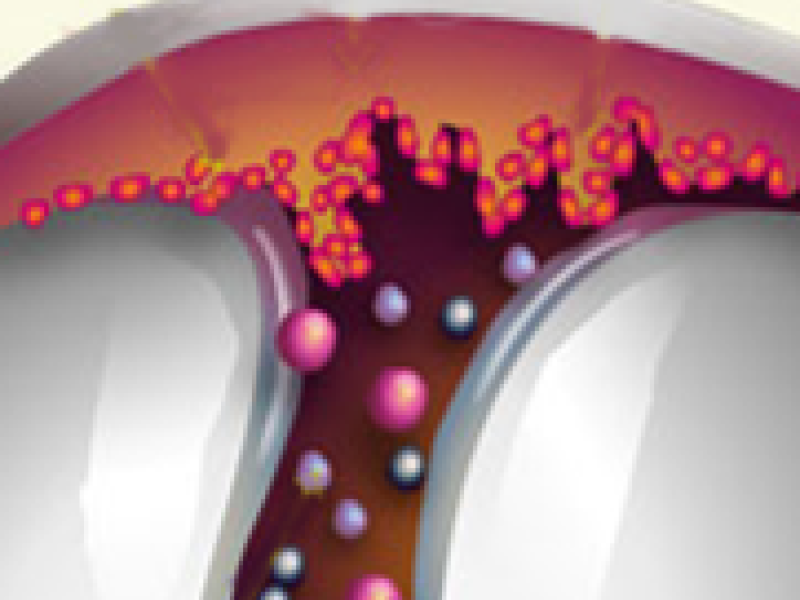The purpose of the project is the development of an in vitro and in silico model for arthritis research in order to reduce the use of laboratory animals for in vivo experiments. It is an interdisciplinary and basic research project with scientists and physicians from the Charité – University Medicine, Berlin (Medical Department, Division of Rheumatology and Clinical Immunology) as well as mathematicians from the Zuse Institute Berlin. So far, there exists no appropriate in vitro model which is able to illustrate an inflamed arthritic joint including all signal molecules, cells and tissue types. Consequently, there are mainly in vivo animal models used in rheumatologic therapy research, although their results cannot often be transferred adequately to the human organism. Our goal is to develop a valid in vitro 3D model to simulate the immune mediated pathogenesis of arthritis in order to present an alternative for the traditional insufficient animal models. With its worldwide very frequent occurrence of 0.5-1.0%, Rheumatoid Arthritis (RA) is the most common arthritis and thus will be used as an example. RA is an autoimmune disease that allows cytokines (TNF, MIF, IL) to activate immune cells, e.g. macrophages, T-, B cells and neutrophils, and allow them to enter the synovial fluid. This leads to degradation of healthy cells, e.g. bone cells and chondrocytes. Due to hypoxia and nutrient deficiency of the synovium, immune cells infiltrate to it and increase the metabolic demand. The synovium will expand and angiogenesis will appear. The in vitro model will be a multi-component system which contains all involved cell types and allows interactions between cells by cell contacts and signal molecules. The integration of the collected data into the mathematical in silico model allows optimizing both parts of the project. The project is designed to be worked out within three steps. We will begin with the simulation of a healthy joint, followed by the depiction of an inflamed arthritic joint to finally study the influence of possible drug therapies by using high throughput screening. By combining the methods used in biological developmental research and those used in mathematical systems biology we aim at developing a valid, efficient and attractive alternative to animal experiments in the arthritis research. The reduction of animal testing is known as 3R research (reduce, replace, refine).
